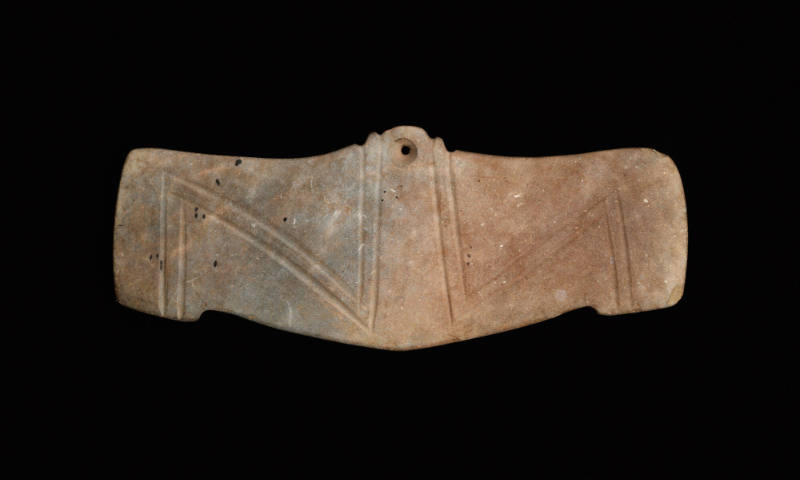
Object Details
Culture
Lalibela (Ethiopia)
Date
14th or 15th century
Medium
Bronze
Dimensions
10 5/8 × 6 1/4 inches (27 × 15.9 cm)
Credit Line
Gift of Marc Ginzberg, Class of 1951, and Denyse Ginzberg
Object
Number
2005.001.001
BRIEF DESCRIPTIONAs an object sanctified by the blood of Christ, the cross is a vital element of rel(…)
BRIEF DESCRIPTIONAs an object sanctified by the blood of Christ, the cross is a vital element of religious practices in Ethiopia, serving as a powerful symbol of triumph and protection. Ethiopia is the second oldest Christian state in the world, and still has a Christian majority today.WHERE WAS IT MADE?This cross comes from Ethiopia. HOW WAS IT MADE?The brass processional cross was traditionally made through the lost-wax casting process, in which the cross is first crafted in wax then covered in clay and fired. During the firing process, the wax melts and flows out of the clay mold. The crevice is then filled with molten brass, and after the metal hardens, the clay mold is broken to reveal a brass cross. Because the mold is destroyed, the lost-wax casting process produces a unique cross each time. Certain details can also be added by sawing, punching, or tooling the metal after casting.HOW WAS IT USED?Processional crosses are mounted on a long staff and carried by priests during religious ceremonies. Because crosses represent the crucified figure of Christ, processional crosses are “dressed” with rich, colorful fabrics when in use. As a result, the crosses incorporate openings designed for securing these cloths while the crosses are carried along their processional routes during festivals, such as Epiphany.WHY DOES IT LOOK LIKE THIS?Each of the three religious centers in Ethiopia—Aksum, Gondar, and Lalibela—has its own specific style of cross. Rounded processional crosses, like the one shown here, are characteristic of Aksumite design. Diamond-shaped handheld cross represents Gondarian design, and Lalibela crosses are typically more elongated on the vertical axis and are enclosed in a pear-shaped frame.












